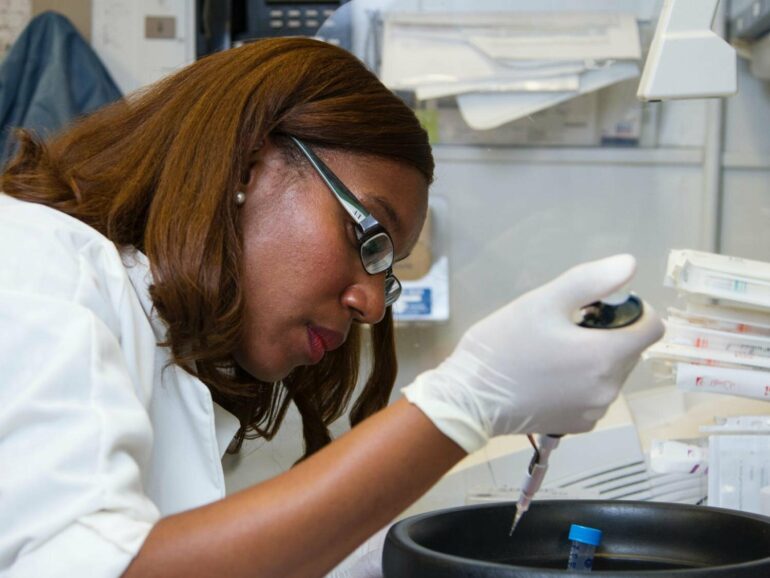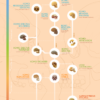EPFL scientists have produced a series of maps showing historical migration events, including the migration of mountain farmers native to Upper Valais who began to settle in German-speaking Switzerland in the 13th century, by applying methods from population genetics—but using linguistic data rather than genes.
Transposing methods from population genetics to linguistics might sound like a far-fetched idea. But this is precisely the novel approach employed by a group of scientists at EPFL’s Laboratory of Geographic Information Systems (LASIG). The research had its genesis in eastern Switzerland with SADS, a linguistic atlas project that captured morphosyntactic features in the language spoken by 3,000 residents of 383 Swiss German-speaking municipalities. “A colleague at the University of Zurich working on the spatial distribution of linguistic features contacted us at LASIG and asked us to help determine the geographical origins of Swiss German dialects,” says Stéphane Joost, a Senior Scientist at LASIG. “I was drawn to the idea of doing this kind of cross-disciplinary research. The prospect definitely piqued my curiosity.”
The research was picked up by student Noemi Romano for her Master’s project. The findings were published in the Journal of Linguistic Geography, in a paper authored by Romano (lead author), Joost, and Peter Ranacher and Sandro Bachmann from the University of Zurich. “The syntactic data collected for the SADS survey was the primary dataset for our research,” explains Romano. The team used methods normally employed in population genetics—a branch of science that explores the factors determining a population’s genetic makeup as well as the effects of those factors—but replaced genes with morphosyntactic features.
Stepping outside the comfort zone
“Fortunately, this research didn’t require a high level of proficiency in German,” says Romano, who has since graduated from EPFL with a degree in environmental science and engineering and now works as a geographic data analyst for the City of Lausanne. “Linguists supplied the data, and we applied a method taken from spatial population genetics that involves using algorithms to estimate hereditary ascendancy.”
Romano adds that the method can be used to “iteratively calculate the percentage of genetic material that an individual shares with a particular family—or, in our case, whether the dialect spoken by a given person in a given municipality is part of a specific group.” According to Joost, the LASIG scientists approached the research with the aim of “determining whether we could detect historical population movements by analyzing dialects—despite having no background in linguistics.”
For Romano and Joost, it proved to be a worthwhile endeavor. “We quickly realized that, using our method, we could reconstruct past events documented by historians,” says Joost. This early success encouraged them to press ahead with their research, “even though it meant doing something out of the ordinary and stepping outside our comfort zone.” The scientists analyzed groups of morphosyntactic features, connecting those with the most similar traits in order to generate a series of maps showing the spatial distribution of different dialects across Switzerland.
Opening up new avenues of research
The most striking finding, according to the research team, related to the Walser people—a community of mountain peasants native to Upper Valais who began migrating to the Bernese Oberland and the cantons of Uri and Grisons in the 13th century. “The map we produced clearly depicts the migration corridor contained in historical records,” explains Romano. “Our map was a real eye-opener for our linguist colleagues, who weren’t expecting to see such cut-and-dry evidence of the Walser dialect in the language spoken today in the areas where these people settled.”
Romano and Joost met the goal they set out to achieve with their research, which was to confirm their hypothesis that parallels can be drawn between genetic and linguistic traits. Their findings open up other potential avenues of research. “For instance, we could deploy this method on a larger scale in order to more systematically and accurately map linguistic features,” says Joost.
More information:
Noemi Romano et al, Linguistic traits as heritable units? Spatial Bayesian clustering reveals Swiss German dialect regions, Journal of Linguistic Geography (2022). DOI: 10.1017/jlg.2021.12
Provided by
Ecole Polytechnique Federale de Lausanne
Citation:
Scientists apply genetic methods to linguistics to track human migration (2022, June 24)



